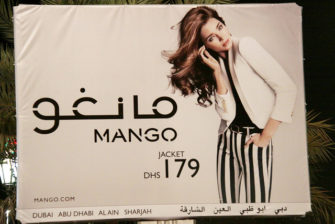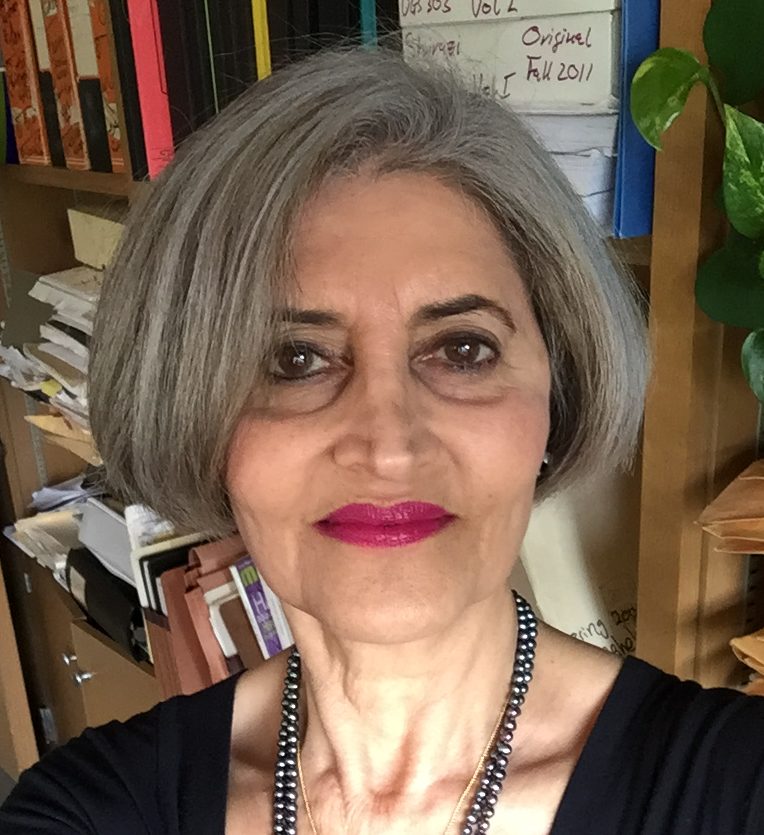
International and national brands have understood the potential profits that Muslim consumer markets present. For example, in London, the annual Harrods Hajj (“Ramadan rush”) is an annual shopping event to purchase gifts for Eid (one of the annual celebrations in the Muslim calendar honoring the willingness of Ibrahim to sacrifice his son as an act of submission to God’s command). Many secular people, and especially religious people brought up in different religious traditions, may be fearful of religions encroaching on daily life, while conservative Muslims fear that Islam is becoming watered down by commercialism.
Designer clothing brands that cater to Muslim consumers in the Middle East have mushroomed (even though some of this clothing is manufactured in Muslim-unfriendly countries). Among these brands are DKNY, Oscar de la Renta, and Tommy Hilfiger, whose companies manufacture modest wear designed exclusively for Middle Eastern markets. Of the four reviews to Brand Islam, none raised the issue of opportunist companies, located in extremely anti-Muslim nations, making products for Muslims. However, the point about opportunism is arguably enfolded into especially George Gonzalez’s engagement with commodity fetishism and neoliberalism. New evidence for such opportunism is the Nike sportswear line’s recent move to capture a new market. Just two days before the International Women’s Day (2017), Nike announced its “Nike Pro hijab” line publically with several series of advertisements targeting Muslim women, using known Muslim hijabi athletes for the ads. In my book, I have spoken about various lesser known, smaller sports hijab manufacturers already in this business as early as 2002. However, Nike, as a big brand name, has now introduced its latest product incorporating the word “hijab” a familiar term associated with Muslim women in its products focusing on Muslims. There is no doubt that this major brand will capture the attention of Muslim women and likely bring in large profits on their investment. This is another clear example of how a name associated with Islam (in this case the word “hijab”) is used to generate business.
I have attempted to address the key points mentioned by each reviewer although, given limited space, I cannot entertain all comments. I appreciate the reviewers’ thoughts and the time spent on a critical reading of my manuscript.
Neslihan Cevik writes that: “most companies that operate within the Islamic clothing industry were quick to recognize the potential but have failed to understand what the actual need or problem is, what that problem means and what socio-political factors drive it.” However, economic predictions and statistics point to a different story, as evidenced by reports that Muslims spend about $230bn just on clothing and the amount is projected to be $327bn by 2019. The market value is “larger than the current combined clothing markets of the UK ($107bn), Germany ($99bn) and India ($96bn).”
This booming industry is not only evident in Muslim designers who create modest clothing for Muslim consumers, but also in the numerous European fashion houses catering to Muslim tastes, a phenomenon that did not exist 20 years ago. The most recent Global Islamic Economy Summit in Dubai (2015) and the Saverah Expo in London (2016) point to a healthy Islamic fashion industry. Cevik also critiques “the erroneous belief that entry to halal markets requires just a simple step: take an item, as mundane as it can be, market it as ‘Islamic’—as if Islamic is generically and mechanically defined— and voila.”
An entire chapter from my book (chapter 2) deals in detail with the principle of halal as applied to a single item, from farm to table as it were, and the stages in between in the process of creating and defining a halal product. Relatedly, I believe the book provides a clear view and examples of the issue of fraudulent, contaminated, adulterated, and bogusly-labeled halal products. Cevik’s comment about Islamic fashion (her focus is Turkey, her area of expertise) being about self-identity as well as religious identity are correct. Muslim youth are rejecting “authoritarian religious communalism, and [redefining the] Umma…” Of course, my book is not exclusively about Turkey; my focus is on the global increase and interest in products and services marketed and branded as Islamic.
George González comments on how I used “brand” terminology. This book is not a marketing or business text, thus the reader should not be looking for how a brand in the world of marketing is established. Rather, my use of the term conforms to two well known theories of consumerism (TRA, and TPB theories, pp.8-9) which demonstrate how descriptors, such as Islam/Muslim, transmute into brand identity which, in this case, consumers relate to piety. George González also comments that “…women’s bodies stand as literal crossroads for the crisscrossing of historical forces. From the burkini controversy to the religiously imposed strictures against an Islamic fashion industry in Iran to the displaced patriarchy played out in controversies regarding the modesty and piety of girls’ dolls, the rise of ‘brand Islam’ (and both fundamentalist and Islamophobic resistance to it).” This is a very correct observation and I reemphasize that the majority of cases in my study relate to gender dynamics as it relates to production of materials that are mostly applicable to women (although hygiene products such as halal soap, shampoo, toothpaste etc., or halal leather goods such as shoes, belts, bags, etc., are not exclusive to women). It is always interesting to observe and evaluate how the woman’s body is always at the center of consumerism and marketing products and how advertisement companies engage the woman in selling products. In Brand Islam, the range of products for women is higher than those created for men. For example, men in general do not consume any form of cosmetics, but women do, thus the segment of the halal industry focused on women’s halal cosmetics has proven to be very lucrative. For men, the rules of Islamic dress are much less restrictive, but no less important. Men are attracted to several aspects of a woman’s body. Even her legs and thighs are considered sex objects or awrah. But the same is not true for men. Men are required to cover the awrah, which for a man is from his navel to his knees but not his head, hair or even the chest (although the chest is normally covered). Women require more types of clothing and, in general, women’s clothing styles are much trendier compared to men, allowing women to buy more varied clothing items, which opens the way to not only more seasonal types of clothing, but also numerous styles within the same categories.
These points should make it clear why in a global Islamic market, there are more product offerings for women than men.
Slavica Jakelić writes that “Brand Islam is a welcome addition to the growing number of books that attempt to move us beyond the primary focus on Islam as a political phenomenon or a platform for yet another critique of secularism…” This point is well taken and appreciated, as there are many other things in life important to Muslims which should be recognized beyond the stereotyping argument that all Muslims think and behave in the same way. Muslims, like any other group, live in societies surrounded by consumer goods and are influenced by marketing and advertising that appeal to them. Further, Slavica Jakelić comments that “while Muslims as believers might focus on halal in the context of the global market as the realm that enables them to exert theological, cultural, and political agency and do so against Western modernity, the impulses that shape their theological orientations and religious acts related to halal seem quite aligned with some aspects of that modernity.” Slavica Jakelić observation about modernity is correct. Muslims do not think of themselves as being trapped in 7th century Arabia with limited material commodities. The devout Muslim appreciates modernity, its conveniences, and the variety of choices that the global market offers including products prepared and packaged under the auspicious of Islam. In other words, “consuming Islam” is another way to look at the consumption of Islamic goods. Slavica Jakelić raises a good question about the “…religious authorities in ascertaining the halal /haram distinctions and how the logic of the market influences the market in the Western countries.” One must understand that even the religious authorities are still bound to governmental regulations; otherwise, they are not able to function. For example, as regards matters of halal product certification, the religious authorities operate under government regulations or they are connected to some branch of government. I have offered the example of caviar, i.e., eggs from beluga fish in the Caspian Sea (p. 49). Caviar’s status changed from mashbooh (“doubtful” or “suspect”) to halal when the Islamic Republic of Iran was established in 1979. I believe that caviar gaining halal status in Iran was based on its economic gain in local consumption in addition to its already established status as an expensive commodity for export. This decision regarding the change from mashbooh to halal was made under the watchful eyes of the religious authorities, who created an item of consumption for Muslim Iranians who would not buy caviar otherwise. Another example from the book (pp. 53-54) concerns Barbican’s nonalcoholic beer, which’s status was changed from haram to halal by the Malaysian Islamic Development Department (JAKIM). The most important aspect in this case is that the halal logo can only be issued by JAKIM, which is supported by the Malaysian Government. “Since its inception until today, the Chairman of the Islamic Religious Affairs Council has always been the Prime Minister of Malaysia…”
Vincent Miller comments that “[a]nti-sharia activists organize boycotts of major brands that cater to halal needs, but the bar is set much higher than the political sphere.” It is true that “recognition continues via market segmentation.” However, when one group strives to dominate and voice their anti-Islamic/Sharia-driven sentiments, running such establishments is hard and at times dangerous. I have observed that at times more brouhaha about a disputed commodity based on its connection to Islam makes the product more successful and eventually accepted. One good example is Aheda Zanetti,’s burqini/burkini. Aheda is the Muslim Lebanese Australian inventor of this full-body swimsuit. She was interviewed by CCTV (China Central Television) on August 26, 2016 regarding the controversy surrounding her design, which was banned in France because it was deemed to be “a militant act and a provocation.” According to the interview, the controversy caused a 500% increase in sales of the product and, ironically, 60% of customers were not Muslim.
Miller also states that “[i]n the commercial sphere, to be successful, a boycott must result in the removal of the halal options from the market. The mere voicing of dissent does not undo the material presence of halal options on the market; their direct hailing of Muslim consumers continues in advertising and commerce.” I totally agree that a boycott would perhaps result in the removal of the halal option from the market. But, the halal products would find their way back into the market in a different manner. I offered good examples from France and Germany: while halal slaughter (zabiha) and Jewish kosher slaughter are banned there, halal and kosher meet are instead coming from neighboring European countries (such as England).
In response to Miller’s question: “How does the use of halal by large brands impact Muslims’ religious identities and practices? Is this a homogenizing and assimilating force? Or does it deepen and differentiate identity?” In my writing I have clearly stated that for most Muslims (particularly the young ones) who are living in non-Muslim majority places, Islam is a sign of identity and much of the consumption of the Islamic halal commodities is part of this identity.

At the end of his response Miller remarks that “[c]onsumer goods seldom function to convey the importance of abstaining from anything. In this regard, it would be interesting to consider the interplay of halal marketing with the practice of the Ramadan fast.” Miller has brought out an interesting point regarding the Ramadan fast. Although I did not directly address this important aspect of marketing Islam and the Ramadan fast, I must add that there is much sale and advertisement that goes into this annual Muslim ritual, almost equal to the consumerism that goes into Christmas-oriented commodities.
In fact, the Egyptian government implemented a new initiative to control goods prices during Ramadan. At the same time, a large number of companies, particularly those companies that manufacture upper and medium price women’s wear, such as the Donna Karan clothing line, look for opportunities such as Ramadan to sell to Muslim women. Other established fashion designers, such as Giorgio Armani, also manufacture halal chocolate. “Giorgio Armani puts out his limited-edition range of chocolates, dates and pralines – all alcohol-free, gold paper-wrapped and expensive. A box of 16 retails online and across the Middle East, New York and Milan for R600 ($45). Mango, (a clothing manufacturer) launches a special online clothing collection for Eid, ranging from R300 ($23) for a scarf to R3 000 ($225) for a modest maxidress.”

